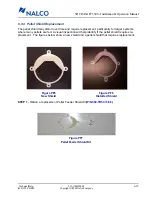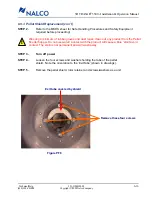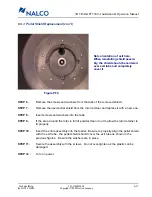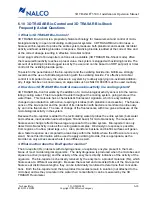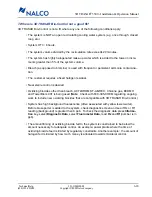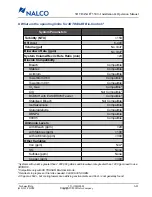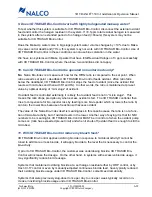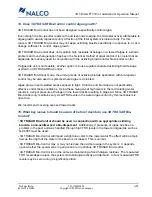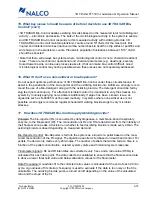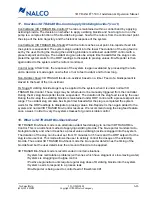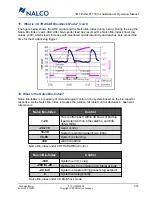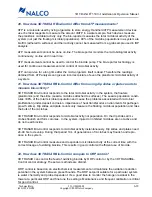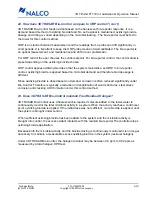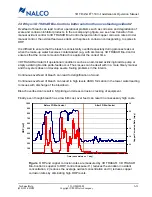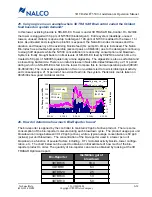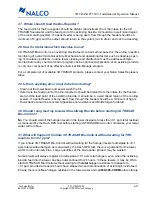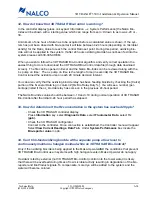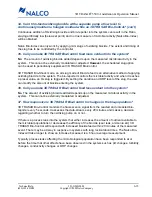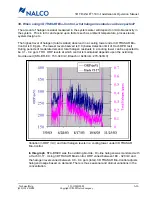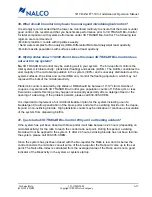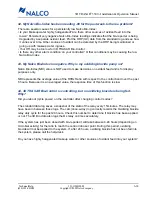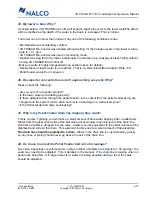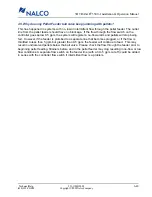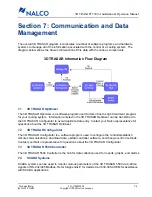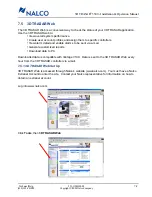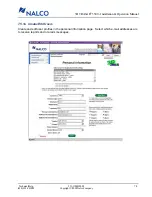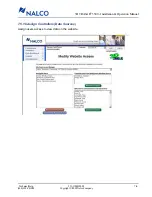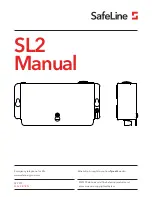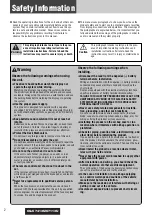
521-OM0108.88
Copyright
2009 Nalco Company
6-29
Technical Help
(630) 305-CHEM
3D TRASAR
5500 - Installation & Operation Manual
20. How does 3D TRASAR Bio-Control differ from ATP measurements?
ATP is a molecule used by living organisms to store energy. Handheld ATP measurement devices
use chemical reagents to measure the amount of ATP in a water sample. Such devices measure
the planktonic microbial activity only. The bio-reporter measures the total microbial activity of the
system (not just the floating microbial populations). 99% of the microbe populations in a system are
biofilm (adhered to surfaces) and their activity cannot be measured from a grab sample used in ATP
analysis.
ATP measurements cannot be done on-line. The bio-reporter monitors the microbiological activity
continuously, on-line and in real time.
ATP measurements cannot be used to control the biocide pump. The bio-reporter technology is
used for continuous measurement and control of microbial activity.
ATP can survive for a long time after the micro-organism itself is dead. Therefore the readings
obtained from ATP analysis can give an incorrect picture of even the planktonic microbial activity of
a system.
21. How does 3D TRASAR Bio-Control differ from using dip slides or plate counts to
measure bio-activity?
3D TRASAR Bio-Control responds to the total microbial activity in the system, the floaters
(planktonics) and the slime (sessile, microbes attached to surfaces). The sessile population consti-
tutes >98% of the total microbial population and cause the problems associated with microbial
proliferation (under-deposit corrosion, impedance of heat transfer, odor, environments for pathogen
growth, slime). Dip slides and plate counts only measure the floating microbial population and miss
the bulk of the microbes.
3D TRASAR Bio-Control responds to microbial activity, not population. On the dip slides all mi-
crobes flourish and form colonies. In the system, injured or inhibited microbes are not active and
do not need biocide.
3D TRASAR Bio-Control responds to microbial activity instantaneously. Dip slides and plates need
24-48 hrs to develop. During that period 10’s of generations of microbes may flourish and repro-
duce in the system.
3D TRASAR Bio-Control measures and responds to microbial activity at the correct time with the
correct dosage of oxidizing biocide. This results in good control with efficient use of biocide.
22. How does 3D TRASAR Bio-Control compare to ORP control?
3D TRASAR can control the feed of oxidizing biocide by ORP control or by the 3D TRASAR Bio-
Control control strategy. These two methods are distinct.
ORP control is based on an electrochemical measurement and maintains the oxidation reduction
potential in the system between preset bounds. The ORP setpoint suitable for a particular system
is water chemistry and probe dependent. It’s a good idea to monitor the halogen residual in the
tower at a particular ORP and fine tune the settings. Maintenance and frequent calibration is critical
for good control.

